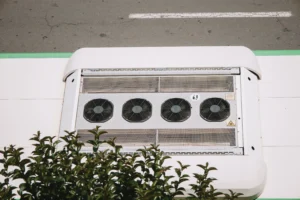As you step through the threshold of your home, the familiar scent of comfort and safety greets you. But have you ever stopped to consider the quality of the air you breathe within these walls?
Indoor air quality is often overlooked, yet it plays a crucial role in maintaining a healthy home environment. From common pollutants to effective tips for improvement, this discussion will shed light on the importance of indoor air quality and provide you with valuable insights to ensure the well-being of you and your loved ones.
So, let's embark on a journey to discover the secrets of a healthier home.
Importance of Indoor Air Quality
Ensuring good indoor air quality is crucial for maintaining a healthy and comfortable living environment. The importance of ventilation can't be overstated in this regard.
Proper ventilation helps to remove indoor pollutants and bring in fresh air from outside, reducing the concentration of allergens, chemicals, and other contaminants. Without adequate ventilation, these pollutants can accumulate and lead to a range of health effects.
Poor indoor air quality can have a significant impact on your health. It can cause or worsen respiratory issues such as asthma, allergies, and bronchitis. Long-term exposure to indoor pollutants can also increase the risk of developing respiratory diseases and heart problems. Additionally, poor indoor air quality can lead to symptoms like headaches, fatigue, dizziness, and eye irritation.
To maintain good indoor air quality, it's essential to ensure proper ventilation in your home. This can be achieved by opening windows and doors to allow for fresh air circulation, using exhaust fans in kitchens and bathrooms to remove moisture and pollutants, and regularly servicing and cleaning your HVAC system. It's also important to minimize the use of toxic cleaning products and avoid smoking indoors.
Common Indoor Air Pollutants
To understand the potential sources of indoor air pollutants, it's important to recognize the various factors that can contribute to poor indoor air quality.
Indoor air pollutants can come from a variety of sources, including chemicals, biological contaminants, and particulate matter.
Chemical pollutants can be found in cleaning products, paints, and building materials. These pollutants can irritate your respiratory system and cause symptoms such as coughing, sneezing, and headaches.
Biological contaminants, such as mold, pet dander, and dust mites, can also contribute to poor indoor air quality. Exposure to these contaminants can trigger allergies and asthma attacks.
Particulate matter, like dust, pollen, and smoke, can be inhaled and can cause respiratory problems, particularly for those with pre-existing conditions.
To reduce indoor air pollution, it's important to identify and eliminate potential sources of pollutants. Some strategies to consider include improving ventilation, using air purifiers, regularly cleaning and vacuuming, and avoiding the use of harsh chemicals.
Sources of Indoor Air Pollution
Indoor air pollution can arise from a variety of sources within your home or workplace. Understanding these sources is crucial in ensuring a healthier indoor environment for you and your loved ones. Common sources of indoor air pollution include tobacco smoke, household cleaning products, volatile organic compounds (VOCs) emitted by paints, solvents, and furniture, as well as biological contaminants like mold, dust mites, and pet dander.
Exposure to indoor air pollutants can have detrimental effects on your health. Poor indoor air quality has been linked to respiratory issues, allergies, asthma, and even more serious conditions such as lung cancer and heart disease. It's therefore important to take preventive measures to reduce indoor air pollution and minimize health risks.
To improve indoor air quality, consider implementing the following prevention measures:
- Ventilation: Ensure proper ventilation in your home by opening windows or using exhaust fans to remove pollutants and bring in fresh air.
- Regular cleaning: Clean your home regularly to remove dust, pet dander, and other allergens. Use natural or low-toxicity cleaning products to avoid adding more pollutants to the air.
- Proper storage: Store household chemicals, paints, and solvents in sealed containers to prevent their release into the air.
- Maintain humidity levels: Keep humidity levels between 30-50% to prevent mold and dust mite growth. Use dehumidifiers or air conditioners if necessary.
Tips to Improve Indoor Air Quality
Understanding the sources of indoor air pollution is the first step towards improving the air quality in your home or workplace. Once you're aware of the potential pollutants, you can take action to minimize their impact.
Two effective ways to improve indoor air quality are through the use of air purifiers and ventilation systems.
Air purifiers are devices that help remove contaminants from the air. They work by filtering out particles such as dust, pollen, pet dander, and smoke. When choosing an air purifier, look for one with a high-efficiency particulate air (HEPA) filter, as these are highly effective at capturing small particles.
Ventilation systems play a crucial role in maintaining good indoor air quality. They help exchange stale indoor air with fresh outdoor air, reducing the concentration of pollutants. Make sure your ventilation system is properly maintained and functioning optimally. Regularly clean or replace filters to prevent them from becoming clogged with dust and debris.
In addition to air purifiers and ventilation systems, there are other steps you can take to improve indoor air quality. These include keeping your home clean and well-ventilated, avoiding the use of tobacco products indoors, and minimizing the use of chemical-based cleaning products.
Maintaining a Healthy Home Environment
Maintain a healthy home environment by implementing these practical tips. By following healthy home practices, you can create a clean and safe living space for you and your family.
Start by keeping your home clean and free from dust and allergens. Regularly vacuum and dust all surfaces, including furniture, carpets, and curtains. Don't forget to wash bedding and pillowcases regularly to remove any accumulated dust mites.
In addition to cleanliness, it's important to control the humidity levels in your home. Excess moisture can lead to the growth of mold and mildew, which can trigger allergies and respiratory problems. Use dehumidifiers in damp areas such as basements and bathrooms, and fix any leaks promptly.
Proper ventilation is key to maintaining a healthy indoor environment. Open windows regularly to let in fresh air and improve air circulation. Consider using an air purifier to filter out pollutants and improve the overall air quality in your home.
Lastly, be mindful of the products you use in your home. Opt for natural cleaning products and avoid harsh chemicals that can release harmful fumes. Choose low VOC (volatile organic compound) paints and finishes for your walls and furniture.
Conclusion
In conclusion, maintaining a healthy home environment is crucial for improving indoor air quality.
By understanding the common indoor air pollutants and their sources, you can take proactive steps to reduce their presence.
Implementing simple tips such as regular cleaning, proper ventilation, and using air purifiers can significantly enhance the air quality in your home.
By prioritizing indoor air quality, you can create a healthier living space for you and your family.



